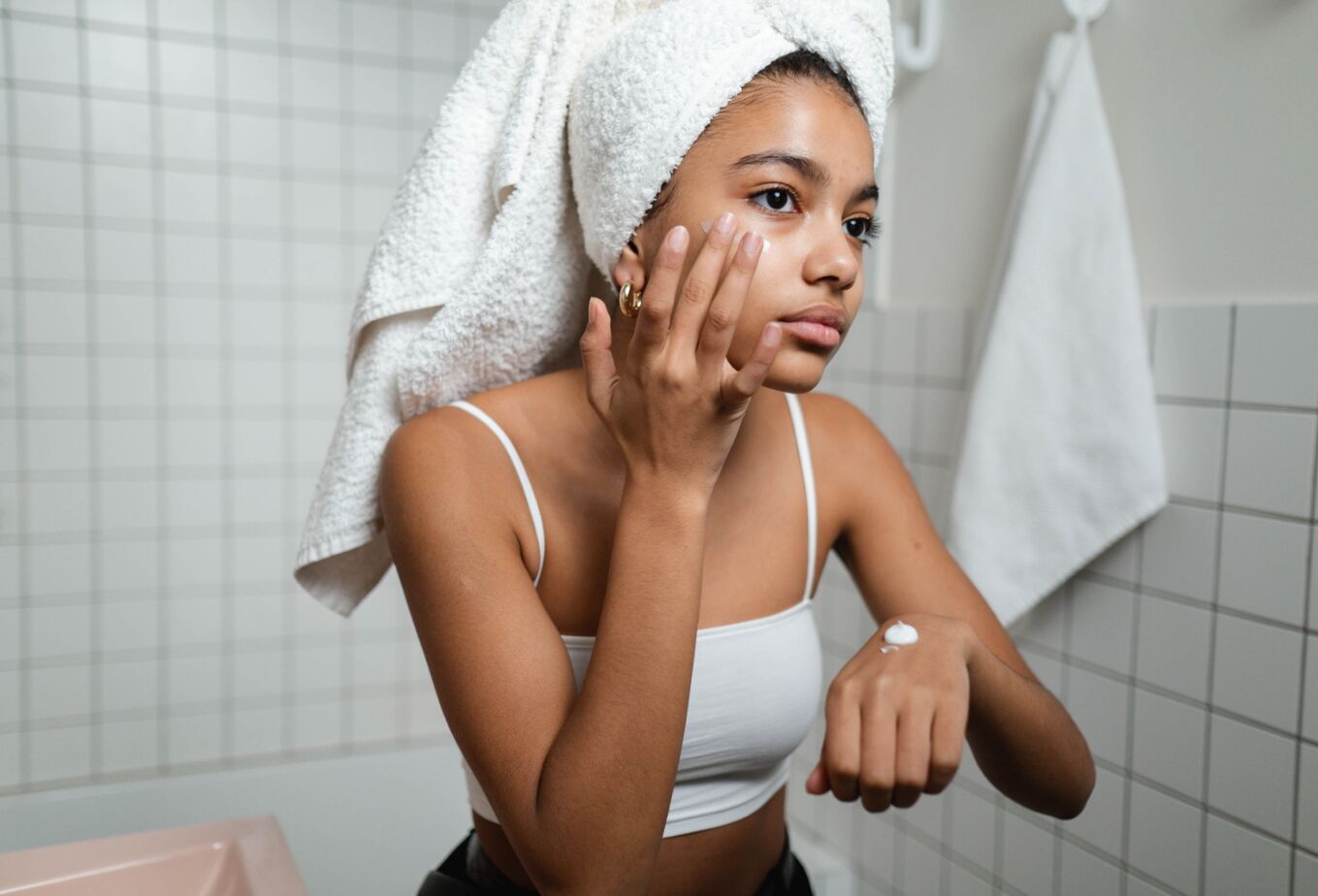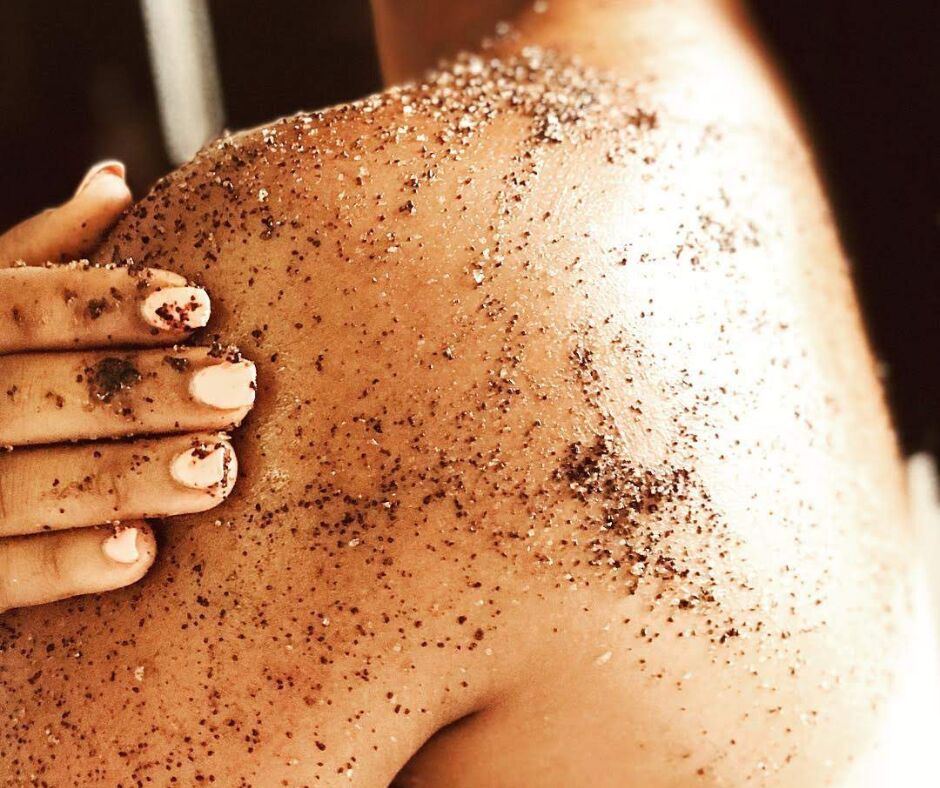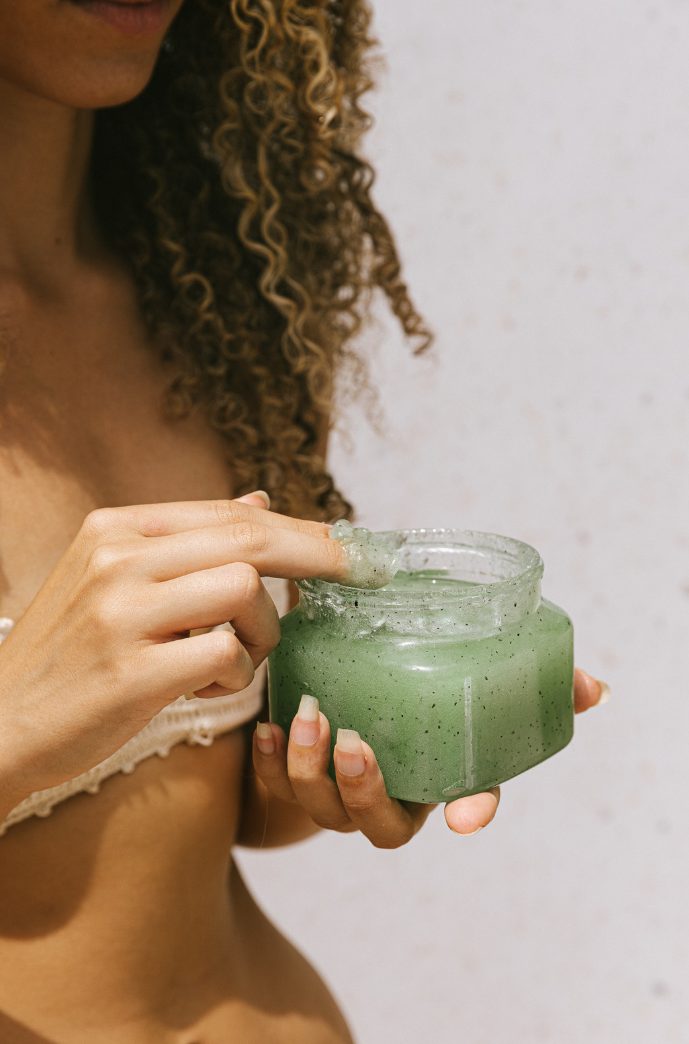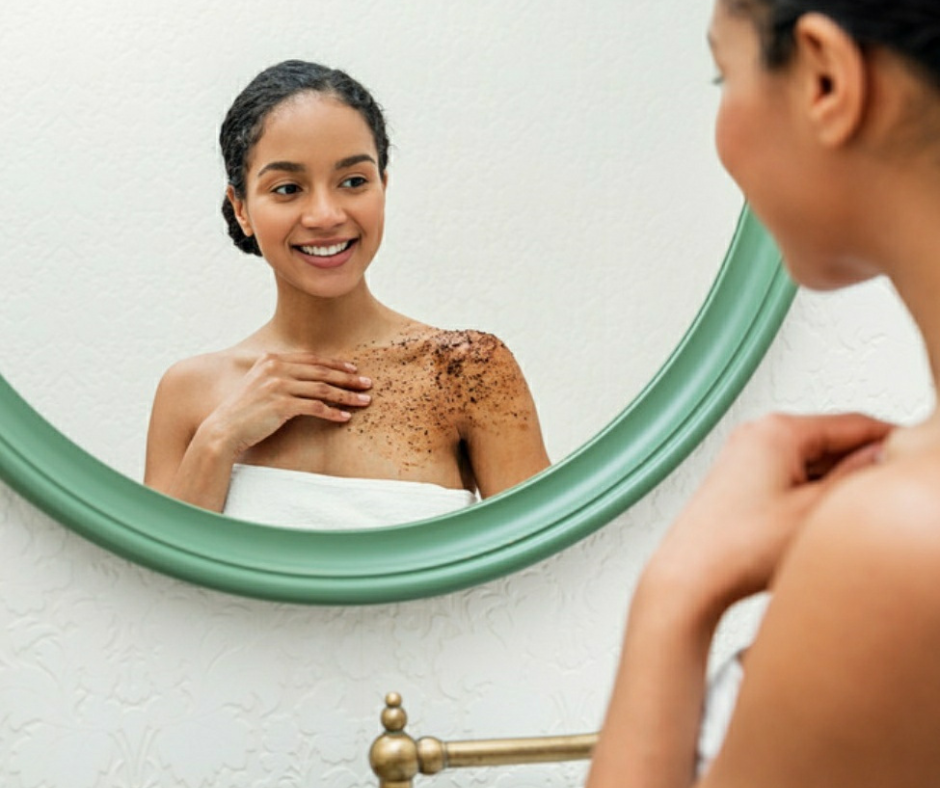I know, you know the benefits of exfoliation by now: it removes the buildup of dead skin from the epidermis, increases cell turnover rate, helps prevent clogged pores, brightens the complexion, improves hyperpigmentation, and helps your products penetrate deeper.
While exfoliating is the crux of the Dame Glowing Skin Method, it’s one of those things, that if you don’t do it the right way, you may end up doing more harm than good. So a big question is how often should you exfoliate? It’s not so straightforward; but factors including the area of the body, your skin type, and your chosen exfoliant should be taken into consideration.
| The Face |
|
| The first thing to know about exfoliating the face, is to start easy. If you’re a beginner Dame to the scrub game or easing back into the swing of things, exfoliating once a week and increasing is a good rule of thumb. Try this for two to three weeks to see if there’s any kind of reaction like red, irritated, or itchy skin. Those are signs of too much exfoliation. But once your skin is used to the exfoliation, then you can do it a few times a week, provided you’re not using an overly-harsh scrub. When it comes to types of exfoliants, there are two: Physical (or manual) and chemical. Physical exfoliants usually consist of small particles or granules that physically exfoliate your skin. Mechanical exfoliation using scrubs, brushes, sponges, or gloves to physically remove dirt, impurities, and dead skin from your body. The particles are literally scrubbing your skin. Look for more smooth exfoliants, with physical exfoliation limited two to three times per week. Dame Facial Scrubs exfoliants are extraordinarily fine, to be effective at buffing away dead skin and treating target areas and yet gentle on the skin. On the other hand, chemical exfoliation is the process of using acids or chemical reactions to remove layers of skin and impurities. Most chemical exfoliators are usually alpha hydroxy acids (AHAs good for improving the appearance and brightness of your skin) and beta hydroxy acids (BHAs better for oily, acne-prone skin) to slough off dead skin cells, and anything else attached to them. Dame Sannae's Botanical Facial Cleansers with glycolic, lactic, and salicylic acids are an example of a chemical exfoliant that gently removes dead surface cells. Topical salicylic acid in our Black Magic Collection with activated charcoal face wash treats acne by reducing swelling and redness and unplugging blocked skin pores to allow pimples to shrink. It treats other skin conditions by softening and loosening dry, scaly, or thickened skin so that it falls off or can be removed easily. The Dame Ageless Collection with lactic acid rapidly exfoliates and boosts naturally youthful radiance, while visibly reducing the look of lines, wrinkles, and dark spots. High potency, purified grade lactic acid exfoliates dull, pore-clogging dead skin cells, to instantly clarify and reveal smoother, clearer skin. Those with sensitive skin should stick to chemical exfoliation when it comes to the face. These skin types may not be able to handle a physical exfoliant as it can feel harsh and contribute to sensitivity. Sensitive complexions can usually use chemical exfoliants two times per week, whereas normal can use them daily, though three times per week should be sufficient. A general rule is that normal skin can tolerate stronger exfoliants and can tolerate exfoliation more often than those with sensitive skin. If you’re oily due to sebum production, exfoliation helps. Try two to three times per week if you have oily skin and see how skin reacts and adjust from there. If you’re unsure or can’t find a sweet spot, I advise consulting a professional skin expert like Dame Sannae, to guide you. As for the order that exfoliating should take in your cleaning routine, it should be done after you cleanse and before you tone your face followed with a moisturizer.
|




